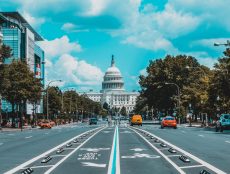
Articles
K-12
Op-Ed
The Impact of COVID-19 on K-12 Learning and How School Districts Can Best Prepare for Fall
By Vincent Grosso
June 10, 2020
The COVID-19 health crisis has had an unprecedented impact on school districts and education systems. In a matter of days, distanced learning became the forced new norm for more than 55 million students at 124,000 public and private schools across the United States. As a parent of four – two in elementary and two in high school – I’ve seen firsthand the challenges they are facing in navigating the impact, and my wife has graciously played double-duty as part-time teacher.
Prior to coronavirus, digital learning was mostly a tool used to support classroom instruction. Now, it’s being used on a broad scale to power remote learning. For school districts and teachers, this has marked a significant – and often overwhelming – shift, as they worked to manage distance learning and the impact, process, tools and challenges that come with it.
During the forced transition to online learning, National Geographic Learning “NGL” worked closely with schools and teachers to provide support to more than four million students in 1,500 school districts across the U.S. The NGL team and I have had discussions with teachers, administrators and superintendents across the country, and have seen a few common lessons learned, and have identified focus areas for the fall and beyond.
School Districts and the Forced Shift to Distance Learning
In March, as the coronavirus started to take hold in the U.S., schools were faced with a tough scenario – for lack of a better categorization, they had to triage. The health and safety of students, teachers and staff was the number one priority. Secondly, there were a number of fundamental equity issues that needed near-term solutions, such as setting up food drives and free lunches for students and families that rely on those programs.
Addressing these fundamental challenges was paramount for schools and communities. Once solutions were devised, district administrators, teachers and EdTech providers had to partner on how to implement distance learning. This was not an easy, or a one-size-fits-all, task. When it comes to education, the needs can vary based on a number of factors such as maturity, socioeconomic circumstances, and so on. Teachers also had varying levels of fluency with the online environment and were often overwhelmed by the inundation of support resources.

This forced shift was a learning experience for the entire education ecosystem. Yes, there were problems and adjustments. Yes, student engagement and productivity were challenged. Yet, schools focused on what they needed to do in this crisis: take care of their students and staff.
As the school year closes out, and we start to think about the fall, we have an opportunity to take this spring’s lessons and use them to prepare for the fall.
For the Fall and Beyond, A Need to Focus on Flexibility and Affordability
Uncertainty remains about the fall term, but there is no doubt school will look different. The impact will vary by region based on the severity of the pandemic, but across the country we will see schools adopting measures to encourage social distancing, similar to what we have seen in a handful of other countries this spring.
Beyond the steps schools need to put in place to ensure safe in-person instruction, they also need to be prepared for a hybrid approach to learning. The uncertainty of the pandemic, coupled with the natural challenges posed in executing social distancing efforts among children, require that schools have a plan in place that allows them to be flexible in the event that instruction must return or remain online in some capacity. For the majority of schools, this will require an investment in processes, platforms and content that enable a flexible learning experience.
It will also be essential that school systems train teachers and develop curriculum that can quickly shift from in-person to remote instruction. As I discussed previously, for too many teachers, the shift to online learning this spring was overwhelming, and often ineffective – especially for those who had never used digital tools in the classroom previously. This is why it is imperative that schools use summer teacher trainings this year to arm educators with an understanding and knowledge of how to use digital tools, so they feel confident with online instruction.
The financial impacts of the COVID-19 health crisis will also compound the challenge for a number of school districts who face budget cuts and funding restrictions. Districts will need to identify efficiencies and invest in affordable solutions that can address near-term needs, while also offering longer term value.
COVID-19 will have lasting implications for learners and educators in the years to come. As schools prepare for the fall, they will ultimately need flexible solutions that enable teacher and student success regardless of whether instruction remains in the classroom or is again forced remote, while also providing an affordable investment for school districts.
 Vincent Grosso is SVP and Managing Director for National Geographic Learning, the K-12 division of Cengage. In this role, Grosso is responsible for leading the business, including strategy, execution and output for the company’s $200M K-12 business, which provides quality core and supplemental educational materials for the U.S. K-12 market.
Vincent Grosso is SVP and Managing Director for National Geographic Learning, the K-12 division of Cengage. In this role, Grosso is responsible for leading the business, including strategy, execution and output for the company’s $200M K-12 business, which provides quality core and supplemental educational materials for the U.S. K-12 market.
Featured Image: Kyo Azuma, Unsplash.









One Comment